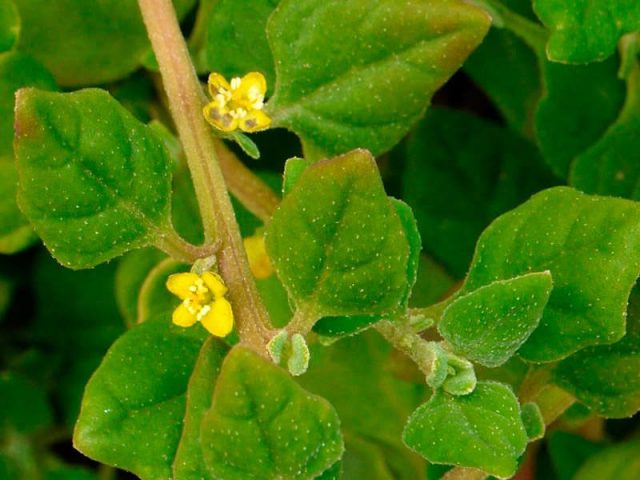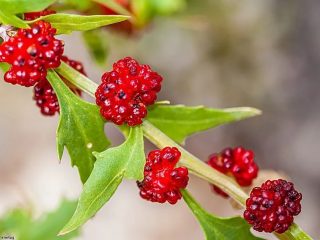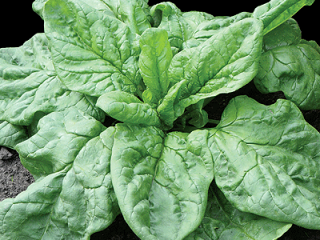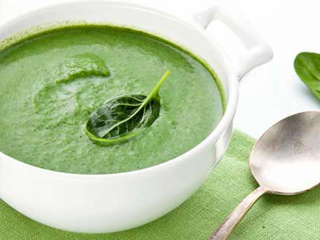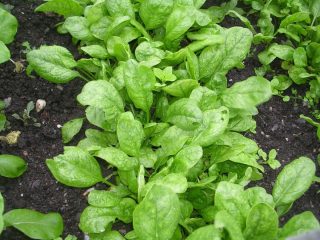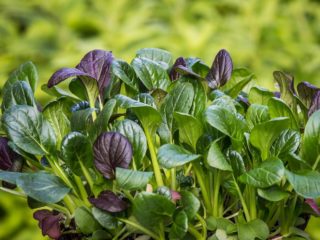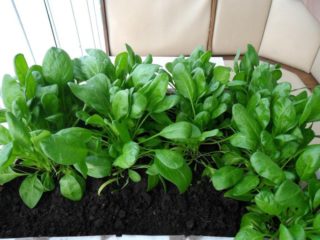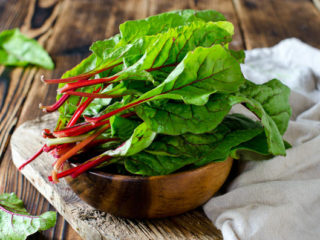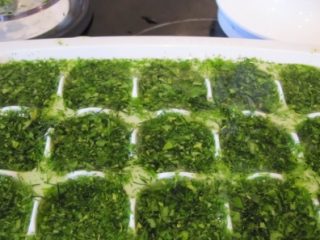Content
New Zealand spinach or tetragony is still an unusual crop in the garden beds. This leafy vegetable, originally native to New Zealand, Australia, Africa and South America, has long gained popularity in Western Europe. Russian summer residents are just beginning to get acquainted with it.
Description of tetragony
Tetragonia is an annual plant that got its name due to the shape of the fruit in the form of a tetrahedral box. The stem is highly branched, creeping, reaches a length of 60 cm, but specimens up to 1 m long can be found. Sometimes it has a reddish tint.
Green, fleshy triangular leaves with a jagged edge and short petioles grow on the stem in a spiral.
Small single flowers of a yellowish tint are formed in the axils of the leaves. New Zealand spinach blooms from mid-summer to autumn and bears capsule-shaped fruits, each of which contains from 3 to 8 seeds. The seeds begin to ripen from the end of September.
The root system is branched and superficial.
Leaves and young shoots are eaten raw and can be collected 5–6 weeks after planting. They have a very pleasant taste and have high nutritional value. The plant contains vitamins C, PP, carotene, potassium, calcium, iodine, iron. New Zealand spinach is a dietary product. It is easily digestible and leaves you feeling full for a long time. It is added to salads, soups, vegetable side dishes, sauces and used as fillings for pies and casseroles. In general, they can completely replace regular spinach. To preserve this leafy vegetable, it is pickled, dried, and frozen.
Due to the fact that oxalic acid is destroyed during cooking, even the thickest stems are used in cooking.
Advantages and disadvantages
Despite the fact that New Zealand spinach is a new product for our gardeners, they immediately appreciated its advantages. Positive qualities of spinach:
- high productivity, the ability to regularly collect green mass regardless of the growing season;
- relative unpretentiousness of the plant;
- ability to reproduce by self-sowing;
- spectacular appearance of plantings;
- delicate soft taste of shoots and young leaves;
- wide possibilities of use in cooking;
- rare cases of crop damage by diseases and pests.
Among the conditional disadvantages of culture, the following features can be noted:
- stems and old leaves accumulate oxalic acid, which can be harmful in large quantities;
- demands on watering and soil fertility;
- slow seed germination.
What is the difference between New Zealand spinach and regular spinach?
Although tetragony is not a relative of the usual spinach, but belongs to a different family, the crops have a similar taste, and therefore tetragony also began to be called spinach. And yet the differences between these cultures are very significant:
- New Zealand spinach is a tall, branched bush, and common spinach grows in the form of a squat rosette;
- New Zealand spinach leaves can be eaten all summer, including during flowering, while garden spinach is suitable for food only before bolting;
- New Zealand spinach is a more productive crop compared to ordinary spinach, since it very quickly grows new green mass to replace the cut one.
- According to reviews from gardeners, New Zealand spinach is significantly superior in taste to the usual garden spinach.
Growing technology
The agricultural technology of New Zealand spinach is quite simple and practically does not differ from the technology of growing other leafy vegetables.
Landing dates
New Zealand lettuce can be grown both in open ground and in a greenhouse. Seeds are sown in the beds at the end of May; in a greenhouse, planting can begin about 2 weeks earlier. In the northern regions, it is recommended to start planting no earlier than June, since the plant does not tolerate frost. Due to the fact that this is an early ripening crop, and the harvest of greenery continues until late autumn, you can sow seeds almost all summer.
The crop is also sown in the fall, then you can get the first green mass 1–2 weeks earlier.
The plant reproduces well by self-sowing.If you leave New Zealand spinach in the garden until late autumn, the seeds will sprout vigorously next year, so it is enough to plant the crop once and then simply take care of the plantings.
Site selection and soil preparation
New Zealand spinach prefers sunny areas, but grows well in partial shade. It will feel best on breathable, fertile light and medium loamy soils. In the fall, the site is dug up, compost, superphosphate, lime and potash fertilizers are added. When growing crops on heavy clay soils, sand and fine sawdust are also added. In spring, additional urea is added.
The crop can grow next to other leafy vegetables, but its tendency to grow must be taken into account. Since New Zealand spinach grows slowly at the beginning of the growing season, you can plant other early ripening greens in the rows: lettuce, radishes, watercress. While the spinach is gaining green mass, these crops will have time to ripen and can be removed from the garden.
Seed preparation
Growing New Zealand spinach from seeds does not require much effort. You can use both seedling and non-seedling methods.
Seedlings are driven out from mid-April, after first soaking the seed in warm water for 48 hours - this will allow for earlier germination. To prevent mold from appearing during this time, the water should be changed several times a day. It is better to sow seeds in small individual containers, placing 2–4 pieces in each. You can plant a whole seed pod in a glass. After 2–3 weeks, one of the strongest plants is selected from the emerging seedlings and left.
Before planting in open ground, it is useful to harden the seedlings by taking them outside for several hours a day for a week.
Landing algorithm
New Zealand spinach grows strongly, so it needs a large area. Seedlings are planted according to a 50x50 cm pattern. The plants tolerate replanting well, but they cannot be planted in open ground deeper than they grew in the pot.
When sowing seeds in open ground, they are buried 2–3 cm. You can also sow whole seed pods.
Before planting, the soil is fertilized with urea or ammonium nitrate at the rate of 5 g per 1 square meter. m of land.
Rules of care
New Zealand spinach seedlings sown with seeds in the ground are thinned out several times until the desired planting density is achieved.
Grown plants 13–15 cm high are pinched to stimulate the formation of young green mass. In addition, shoots are cut off every week. New Zealand spinach tolerates this procedure well and very quickly restores its green mass.
Despite the fact that tetragony is a drought-resistant crop, it requires abundant watering to produce tender, juicy greens. With a lack of moisture, the leaves become coarser and lose their taste. Plantings are usually watered once every two days; in case of dry summer, daily watering is allowed.The plant also needs periodic feeding with organic matter and mineral complexes. New Zealand spinach is fertilized 2-3 times per season - in the first week after planting, then every three weeks.
Like other crops, New Zealand spinach is loosened and weeded as needed.
If the air temperature drops below +15°C, it is recommended to cover the planting beds with film.
Diseases and pests
Gardeners who have already become familiar with this unusual leafy vegetable do not note its susceptibility to disease. There are references to the danger of plants being damaged by fusarium root rot, anthracnose, mealy fly, and mole cricket. An invasion of slugs and snails on young seedlings can be a particular nuisance.
Conclusion
New Zealand spinach or tetragony is a leafy vegetable that will undoubtedly become popular among Russian gardeners. Those who have already encountered growing this unusual crop invariably speak highly of its excellent taste and unpretentiousness and recommend it to other amateur gardeners.
